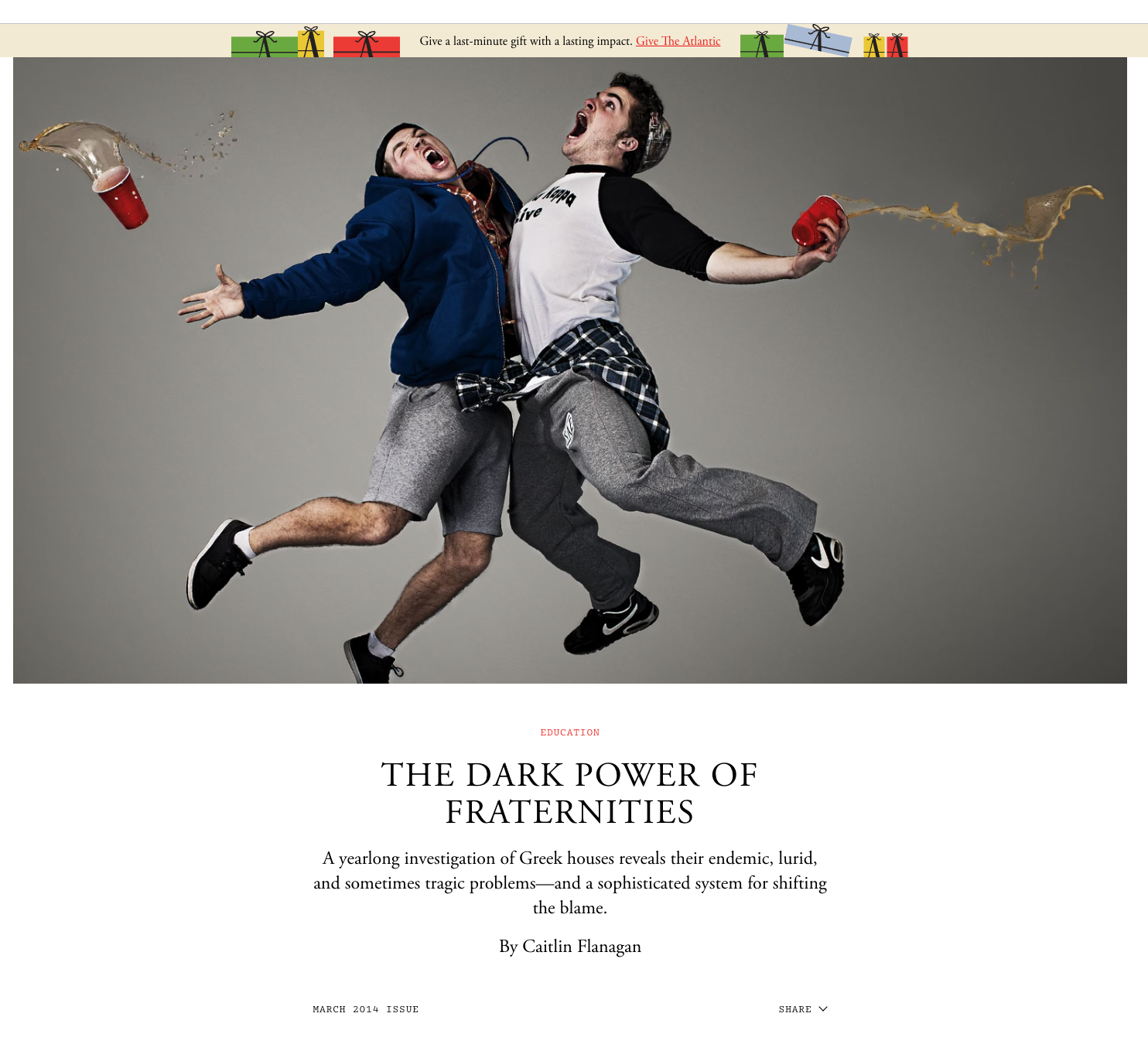The rise of the feature article

I spent the better part of a week completing The Dark Power of Fraternities written by Caitlin Flanagan, which was on the cover of The Atlantic this month. Weighing in at over 15,000 words, the behemoth of an article was consumed on my computer and on the subway with my Pocket app. In moments on subway platforms and walking from place to place, I dove into a dark world of binge drinking and collegiate intrigue.
Each month brings another round of articles from glossy magazines such as The Atlantic. Their cover stories sometimes feature profiles of people, sometimes lists of things to do or interesting companies. It is their topical articles about trends or subjects, though, that fit perfectly into our online media culture. The feature is a medium whose time has come.
The structure and form of the articles has not changed very much, but being free, sharable, short, and topical gives them a competitive advantage over books that has never been this strong. My queue is currently filled with about five, and they have now taken up much of the time I would ordinarily give to books.
The prose is so similar between many of them that they feel written by the same person. They follow a similar style, opening with an individual story and slowly widening scope until they hit a broad, societal scale. The articles meander between several characters, often painting a detailed picture of a world. About two thirds in, they often pivot to a broader or tangentially related aspect of their subject, sometimes finishing quite surprisingly. Or they finish as they began, landing slowly into an inevitable conclusion. Through it all, they read like a captivating lecture: ambling a careful course through an issue, drawing strong characters of unambiguous ethical quality, and speaking with an authority that inspires comfort. They address broad issues, their conclusions carefully attuned to the liberal values of our day.
While the feature article has been around for a long time, in the online world it has morphed into (from a cynical perspective) an elaborate form of linbait. We love articles that make us feel smart and give us things to talk about. They allow us insight into an issue while fitting into the Facebook / Twitter news cycle: readable in one sitting or over several days, often timely, and free to share and consume. They function online as magazine covers did at a newsstand: a bid for readership and a branding for the magazines.
For journalists, increased attention in in-depth coverage must seem like a near-renaissance. It certainly pushes people to read more words and engage more deeply in issues of the day. More detail is more damning in an exposée, and plenty of other issues can certainly use this type of long-form treatment. But if these articles begin (continue) to supplant books in popularity, we would be losing something special. A novel or well-researched book is built to last, and the best ones are subjected to a whole lot more intellectual and ideological rigor.
